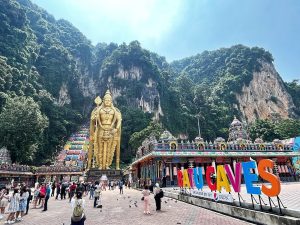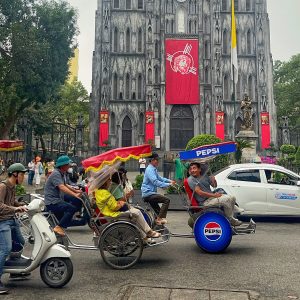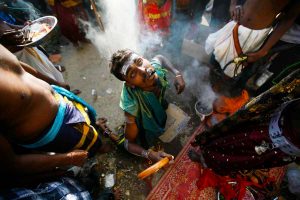Living in Cambodia pros and cons is what this article is going to be about, I promise to pull no punches and have no agendas other than to speak the truth from my personal experience living in Thailand’s lesser famous Southeast Asian neighbour.
I only prepared to be there for a week and ended up staying for 9 months… because I fell in that pesky little travel-planning ruiner thing called love.
But you’re not here to read about my romances, you want to know more about the country’s good and bad points.
The following guide is tailored for people like myself who make most, if not all of their money online and are considering moving to Cambodia, although if you don’t it will still be helpful if you’re looking to make a decision.
After giving pros and cons on the country in general I will then give pros and cons on living in the main expat cities, with a heavy focus on the capital city, Phnom Penh and by the end of the post, you should have a well-informed opinion on whether this is the place for you to lay down some roots for a bit, or if another place is calling your name.
Pros of Living in Cambodia
Even though I chose to leave, there were still a lot of perks of living in Cambodia, it’s a place that I have fond memories of and here are those that stand out to me.
The Visa Situation For Living in Cambodia Long Term is Very Easy
When it comes to getting your hands on a Cambodian visa, it really couldn’t be simpler… for most nationalities, unless you’re from Afghanistan, Algeria, Saudi Arabia, Bangladesh, Iran, Iraq, Nigeria, Pakistan, Sri Lanka, or Sudan, where things get a little more complex.
If you own a passport outside of these ten countries, you can usually get your visa on arrival. But, to save time with border control and immigration, it’s worth sorting it out beforehand.
You can apply for a Cambodia e-Visa online by filling out a few simple forms, at the end of which you’ll be issued an e-visa. Aside from filling out some personal information, you’ll also need to pay a visa fee of around $40. The application form will include details such as your name, date of birth, occupation and any countries you’ve visited recently.
The only catch to organising your visa before your trip is that you’ll need to enter the country within 90 days of your visa being issued. Once you’re in Cambodia, you’ll have 30 days until your visa expires. If you need a little more time, it’s easy enough to extend your visa for another 30 days for a fee of between $30 and $50 at immigration.
When I was living in Cambodia I knew a girl who knew a girl at immigration. She took care of this for me every month. I’m not saying that you should do that (and it of course comes with its own risks), I’m just putting it out there for the sake of candour – it’s certainly one of those countries where you can bypass red tape if you know the right people.
Make your own choices, as do I.
After living in countries that make it difficult to live there long-term, I appreciate how easy Cambodia made this for me and I was able to free up a lot of mental bandwidth by doing so. As always, you should stay on top of the regulations if you’re looking to live in Cambodia long-term, check out iVisa.com for more details.
Good Weather

Much like the rest of South-East Asia, Cambodia has two distinct weather seasons: the dry season and the wet. The altitude and latitude of Cambodia are pretty much uniform across the county, so the entire country tends to experience the same weather patterns at the same time of the year.
While it may not be perfect and still prone to some natural disasters on a seasonal basis, it seems silly to me now to complain about the rainy season after living in Mexico City, where earthquake fear was a daily part and parcel of living there. The rain beats down hard and fast, but it’s a worthwhile sacrifice for sun lovers who get to enjoy a hot sunny day all year round.
This of course depends on personal preference, I have a weirdly good tolerance for heat for someone who was born in Northeast England and those who don’t will struggle during the dry season living in Cambodia.
The Food is Alright
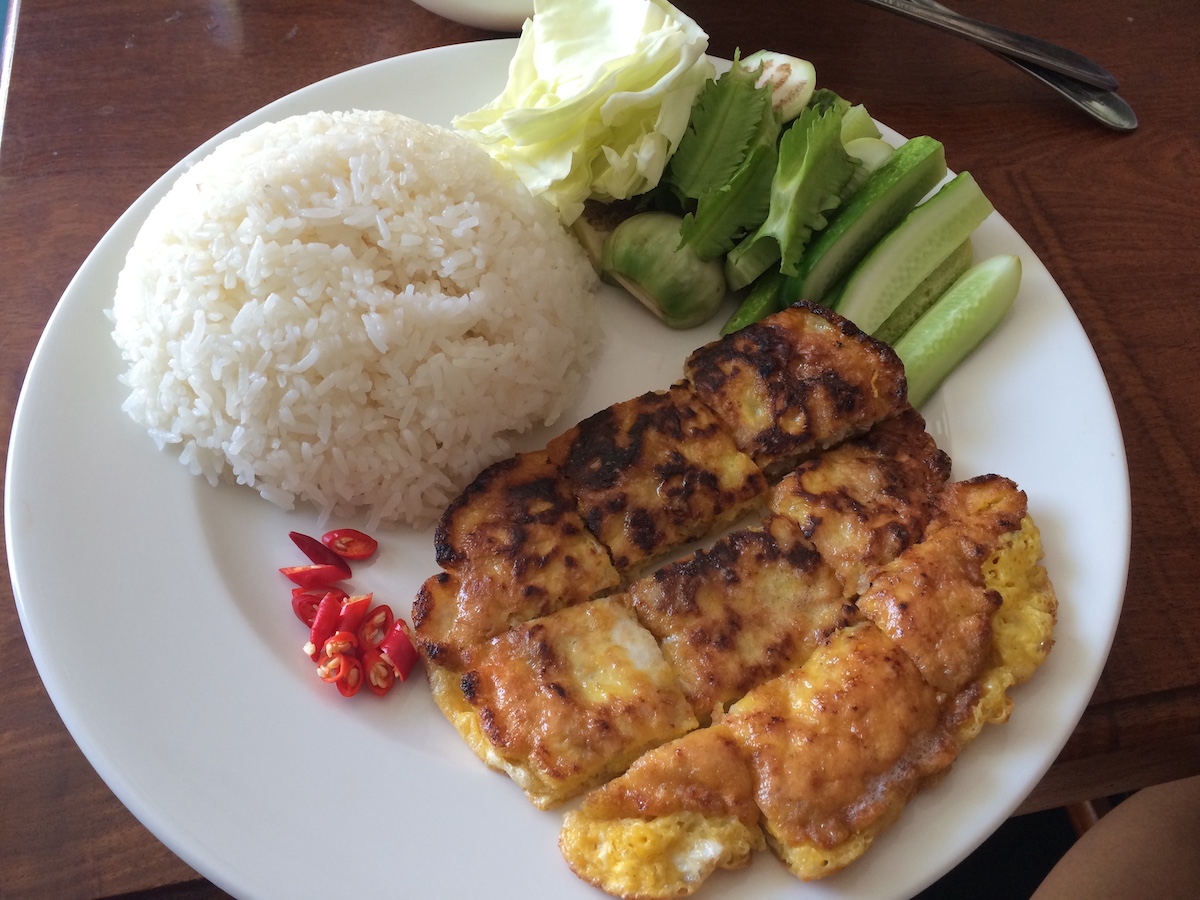
Cambodian cuisine may not be known the world over compared to its Thai and Vietnamese neighbours and rightly so – it’s not as good, however, I was pretty impressed with traditional Khmer food when I lived there.
Note I said; “alright,” the perfectly British over-neutral compliment as opposed to the overuse of “awesome” or “amazing” for just about everything.
Drawing on traditional flavours and spices of the region, Cambodian cuisines include a plethora of ingredients, with a strong leaning towards rice and freshwater fish.
I don’t eat meat anymore, but I did when I lived in Cambodia and I enjoyed it. So apologies to the veg crowd, I can’t really give too much value to what veggie/vegan options are out there. These were the main dishes for eating in Cambodia:
- Fish Amok. Fish Amok is arguably the national dish of Cambodia and can be found across the country. This creamy fish curry, usually using snakehead fish or goby fish, is combined with turmeric, kaffir lime, lemongrass, and shallots and then steamed in a banana leaf bowl before serving.
- Beef Lok Lak Alongside Fish Amok, a dish known as Beef Lok Lak also competes to be Cambodia’s defining dish. This dish consists of stir-fried strips of beef marinated in lime and Kampot pepper, served with rice or a range of vegetables. This dish is modified to particular tastes across Cambodia and the wider reaches of South-East Asia.
- Green Mango Salad. Cambodian food is also known for its fantastic salads, both rich in freshness and flavour. One of the most beloved has to be the green mango salad. A mix of crunchy green mango, chilli, fish sauce, tomato, pickled cucumber, peppers and fresh basil or mint. This is a fantastic accompaniment to a dish or can be simply enjoyed by itself.
The cost of Living in Cambodia is Low
Although Cambodia (apparently) has one of the fasted growing economies in Asia, Cambodia’s overall cost has stayed relatively low. Employment opportunities for expats are particularly good, especially for educators with a TEFL certificate and business owners. Ideally suited for digital nomads, a foreigner living in Cambodia alone could easily get by paying around $800-$1000 per month.
For those considering a move to Cambodia, securing the perfect living arrangement is essential. The real estate Phnom Penh market offers a wide array of options, from sleek modern apartments to charming traditional houses, catering to different tastes and budgets. Whether you are drawn to the vibrant city center or prefer a quieter suburban area, Phnom Penh’s diverse real estate landscape ensures you can find the ideal home. Explore more about living in Cambodia to make an informed decision on your new home.
Let’s take a look at how this cost is broken down and how this will affect your monthly spending when living in Cambodia. Note that these are bare minimum examples and you can easily spend more for more value than you can anywhere else in the world, it just may go a little further here than most.
Cost of rent
- Studio apartment inside the city: $500/month
- Studio apartment outside the city: $150/month
- Single Unit 1 Bedroom apartment: $650/month (you can of course pay more and get a baller pad for a bargain)
Transportation (minimum fares)
- Tuktuk: $1
- Bus: $0.30
- Taxi/Grab/Pass: $2 (more on these apps in the transport section below)
Food and other groceries
- Chicken per kg: $4.50
- Pork per kg: $5
- Rice per kg: $0.75 – $1.25
- Bottled water: $0.70 per litre
- Local beer $0.50
Luxuries and nightlife
- Lunch at a local restaurant: < $5
- A night out for 2-3 people (with alcohol) at local clubs: <$50
- Lunch for one person at a mid-range foreign restaurant: $5-$6
Cambodian People Are Mostly Lovely
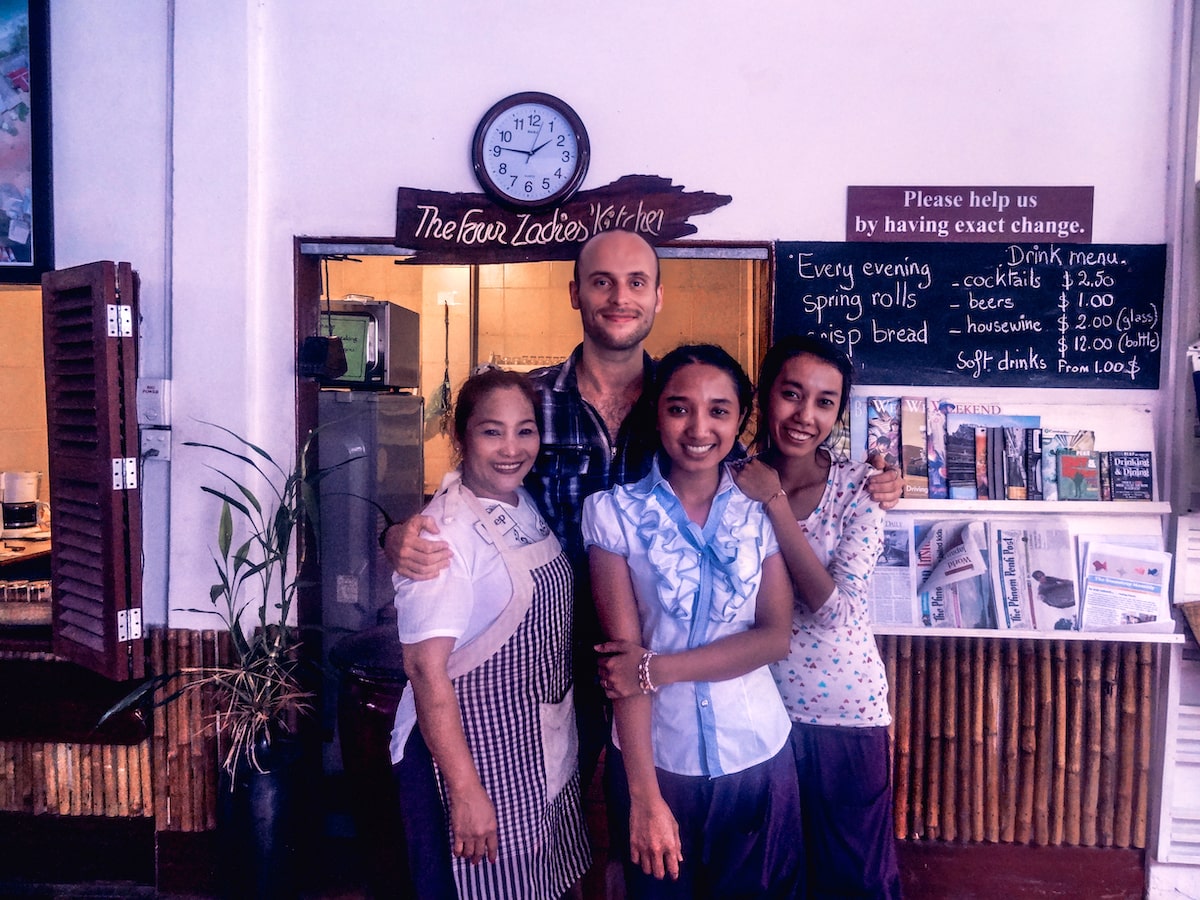
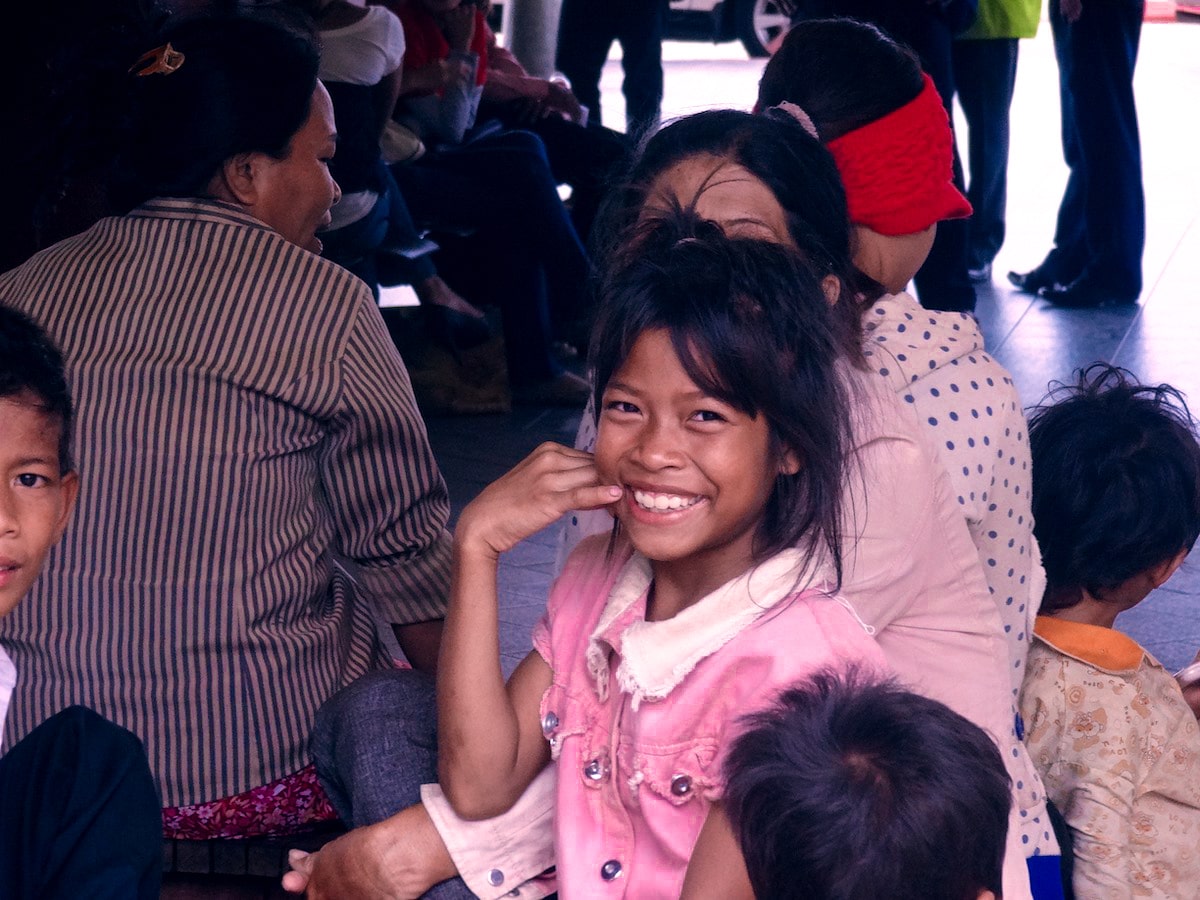
The Cambodian society that we see today is relatively young; built from the ashes of catastrophe, the people of Cambodia have a shared experience of horror and conflict that defines many of them as people. The fact that the Cambodian Genocide only ended 40 years ago means many of its people and the community’s social structure is in the form of shared recovery.
Read more on that grim, but an important topic here: The Rise and Fall of The Khmer Rouge Regime in Cambodia
This, however, has done nothing to stem the overwhelming friendliness of Cambodian people, a positive trait seen across the whole of Southeast Asia. This affable nature is punctured by an often conservative shyness, something that makes Cambodians even more likeable. Even though they may be shy, if you speak some Khmer they will really open up and great connections can be made.
Deeply religious and family-orientated, many Cambodians thrive off traditions while still knowing how to have a good time.
Cons of Living in Cambodia
Admittedly these complaints come under the “not enough home comforts” category and I make no apologies for that. I still needed to work (a lot) when living in Cambodia and a lot of my whining here is based on things that made it more inconvenient to do so.
Slow Mobile Data
Cambodia has a competitive phone data market, all as competitively awful as one another. The main networks in Cambodia are Metfone, Cellcard/Mobitel, Beeline, Smart, Excell and CooTel and the poor infrastructure means they aren’t the best compared to some countries.
The signal from all of these networks works better in built-up places such as Phnom Penh and Siem Reap, but you’ll find that it varies across rural areas.
The majority of ex-pats living in Cambodia opt for a prepaid package from Cellcard, as they have cheap packages, decent coverage and good English-speaking service. You can also search Airalo for your Cambodian eSIM options.
Crappy Wi-Fi
While you’re living in Cambodia, you may want to sort out some kind of internet connection for your home. There are two ways of going about this.
You can either pay for a service to be set up in your home; Opennet and Digi are some of the fastest speeds, especially in Cambodia’s capital Phnom Penh. Secondly, you can buy a portable 3G/4G modem with a monthly package from a mobile phone provider. This has the advantage of portability, but it’s important to check for the best connectivity in the area you’re planning to live in.
In my personal experience, Wi-Fi was a very frustrating part of living in Cambodia. I lost business deals and many opportunity costs navigating with their God-awful internet.
The Child Abuse Crimes
Cambodia is unfortunately popular amongst sexual predators who travel to the country for unimaginable evil although the Kingdom of Cambodia has tried to fight against it in recent years.
I’ll never forget that awful feeling when checking into a hotel and seeing signs informing you that it is illegal to have sex with a child, the reality being that enough people think that this is ok and need to be told otherwise.
You might be completely unaware of this happening in Cambodia and I’m sure there are a lot of vile things in other countries that I’m totally ignorant of, but once you see it is quite hard to unsee it and it does leave a bitter taste in your mouth.
It is Not (Quite) As Safe As its Neighbours
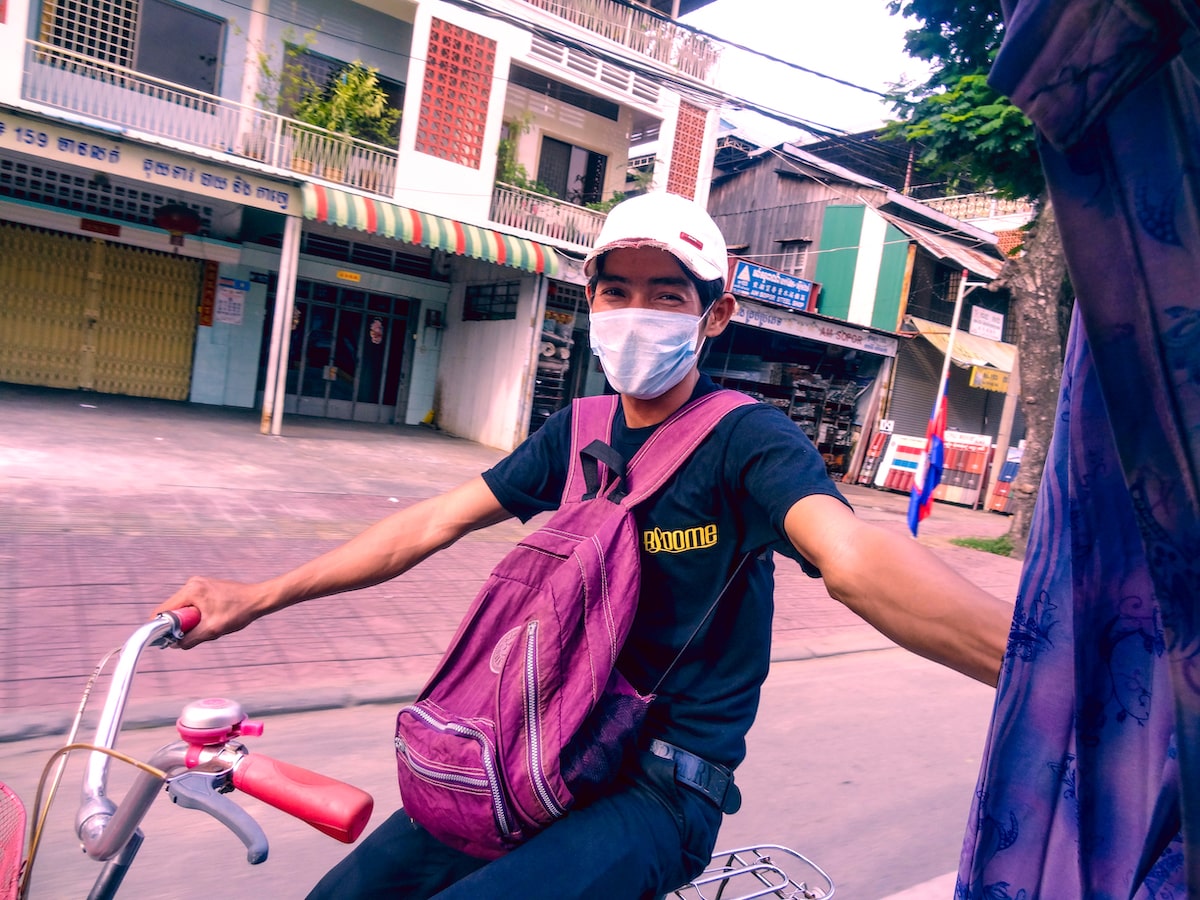
I can almost hear the blood vessels in Cambodian expats heads rupture in disagreement.
While Cambodia is certainly safer than the Latin American countries that I have lived in, it still comes with its own safety concerns and pales in comparison to the likes of Thailand.
One subject that I am happy to use comparisons within travel is that of safety. The saying “there is good and bad everywhere” is a useless and lazy metaphor, some places are simply more dangerous than others and pretending otherwise is a danger in itself.
Phnom Penh tends to have more crime as there are more people living there and big city life all around the world tends to be a little rough around the edges.
Bag-snatching (mainly against females) in tuk-tuks and scooters and sneaky pick-pocketing in tight areas are common in the capital, and it’s not completely unknown in the rest of Cambodia.
The police are pretty sketchy and corrupt and I often heard you can get someone killed for $XUSD by a policeman in Cambodia. I’m not sure how much of this is an urban myth (I’ve never tried to bump anyone off) but I have known of people to have had some dodgy run-ins and get away with bribes.
However, it’s mostly one of those countries where you can find more trouble if you go looking for it. If you’re constantly getting smashed on alcohol or high on drugs and are hanging out in precarious areas around questionable people then your chances of danger will be higher.
Women should be aware of scumbag drink spikers, which is sadly not exactly uncommon on the party islands.
In short, petty crime (mostly drug-related) is worth looking out for, in general, Cambodia is a safe enough place to live, which may seem oxymoronic seeing so I put it in the cons category, but I feel that Cambodia sometimes gets a free pass when this topic comes up.
Most Nightlife in Phnom Penh is Tacky and Awful
Arguably one of the most famous nightlife spots in all of Cambodia, Pontoon has earned a reputation as being the club everyone ends their night. Me and my Swiss mate shared an inside joke “and then I went to Pontoon,” as that was usually the part of the perfectly good night out when things went tits up.
I could have just not gone of course, but the options were certainly limited (although beer is always cheap!)
Pontoon is the last bastion of bad booze on a night out in Phnom Penh and oh-so so awful, much like Lapa of Rio de Janeiro but in one building.
There are a few others to choose from but they really are nothing to write home about.
“Best” Place To Live in Cambodia?
As is the case with any county in the world, the best place to live changes from person to person. With a mixture of busy cities and deserted beaches, Cambodia appeals to every type of traveller, but you’ll need to weigh up the pros and cons of each destination to find out where’s best for you.
Apart from living in an area you enjoy, it’s important to have a town, village or city where you feel safe and have all things you need within an acceptable distance.
Let’s take a look at the best places to live in Cambodia and see what each one has to offer.
Pros and Cons of Living in Sihanoukville

Sihanoukville, named after the former King Norodom Sihanouk, has transformed over the past fifty years from a sleepy seaside town known for independent fishing families to a giant of international tourism and Chinese invested high rises.
The gateway to many of Cambodia’s most idyllic islands, including the remote Koh Ta Kiev and the party island of Koh Rong, Sihanoukville’s place in Cambodia’s tourist identity has grown with every year.
As high-rise Chinese casinos stand side-by-side with backpacker’s hostels, Sihanoukville is hard to pin down when it comes to the overall vibe. In spite of its vast industrial expansion, it still retains its port connections and its Gulf of Thailand coastal beaches – something that’s always hard to resist.
Pros of living in Sihanoukville
- Close to the beach and picturesque islands.
- Streamlined connections to Phnom Penh and beyond.
- Great casinos (if real money gambling is your thing).
Cons of living in Sihanoukville
- Slow internet speed.
- Highly built up, to the point where it mirrors more of a building site than a city.
- Not much of an ex-pat community.
- Unpredictable power cuts.
Although Sihanoukville isn’t going to top the list for the number one digital nomad destination, its proximity to some of Cambodia’s most idyllic islands makes it a popular choice for a beach bunny digital nomad. Choose the area close to the shore or jump on a boat to embrace island life to get the most out of Sihanoukville.
Pros and Cons of Living in Siem Reap

Siem Reap is arguably Cambodia’s international front door, situated just a few miles away from visiting the famous Angkor Wat temple complex. This attention has given Siem Reap an undeniable economic and cultural boost, making it a popular destination for digital nomads living in Cambodia. Not only do you have one of the most coveted archaeological sites in the world on your doorstep, but you also have the hangover that comes after exploring it – and in this case, it is mostly positive.
Drawing in tourists, Siem Reap is a continuous beehive of activity and life, from daytime wandering to a booming nightlife of bars, clubs and general feel-good times in the city. Siem Reap is arguably one of the better places to settle as a digital nomad living in Cambodia.
Pros of living in Siem Reap
- Cheap apartments and living costs.
- Huge expat community.
- Numerous co-working spaces and cafes.
- The small town feels but with a lot going on.
Cons of living in Siem Reap
- Not a huge digital nomad community.
- Burglary is common in the town.
- Underdeveloped public transport.
- Very touristy and almost always busy.
Siem Reap is one of the more popular destinations for expats settling in Cambodia, and with one of the defining icons, the form of Angkor Wat, only minutes away, there is much romance in the idea of living here. A small community of digital nomads is growing in Siem Reap, including a decent co-working space. To escape the stampede of tourists, it’s best to live just outside of the town, closer to the airport side of the town.
Pros and Cons of Living in Phnom Penh
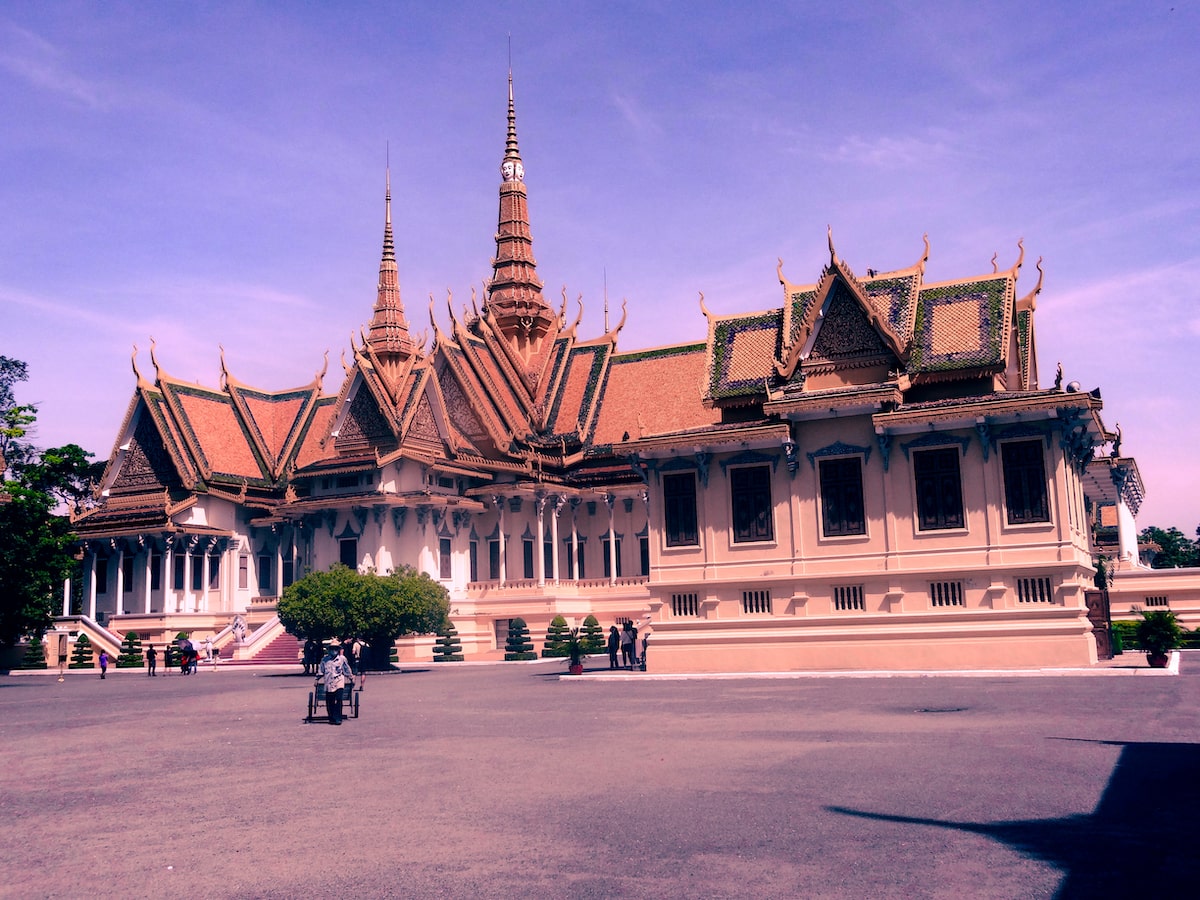
The capital of Cambodia, Phnom Penh, offers itself up perfectly as the country’s premier digital nomad destination. With a pleasant mixture of air-conditioned cafes and co-working spaces, the hustle and bustle of city life feed perfectly into a working week.
Although not the largest capital in the South East Asian region, Phnom Penh has a wide selection of restaurants, bars and modern outlets – finding what you need is so much easier here.
The perfect blend of old and new, tradition and modernity, Phnom Penh provides city life without the supersized intimidation that comes with many modern capitals. This laidback feel is punctured by its close-nit nightlife and growing social scene. This, alongside its ever-growing workspaces, makes it one of the best places to settle when living in Cambodia.
Pros of living in Phnom Penh
- Modern shopping malls and outlets in the city.
- Big range of co-working spaces.
- Good transport links to the rest of the country.
- Booming nightlife and huge expat community.
Cons of living in Phnom Penh
- A busy city that can often become congested.
- Far away from the coast and the quiet life.
- The cost of living is slightly higher in the capital.
Pros and Cons Living in Kep
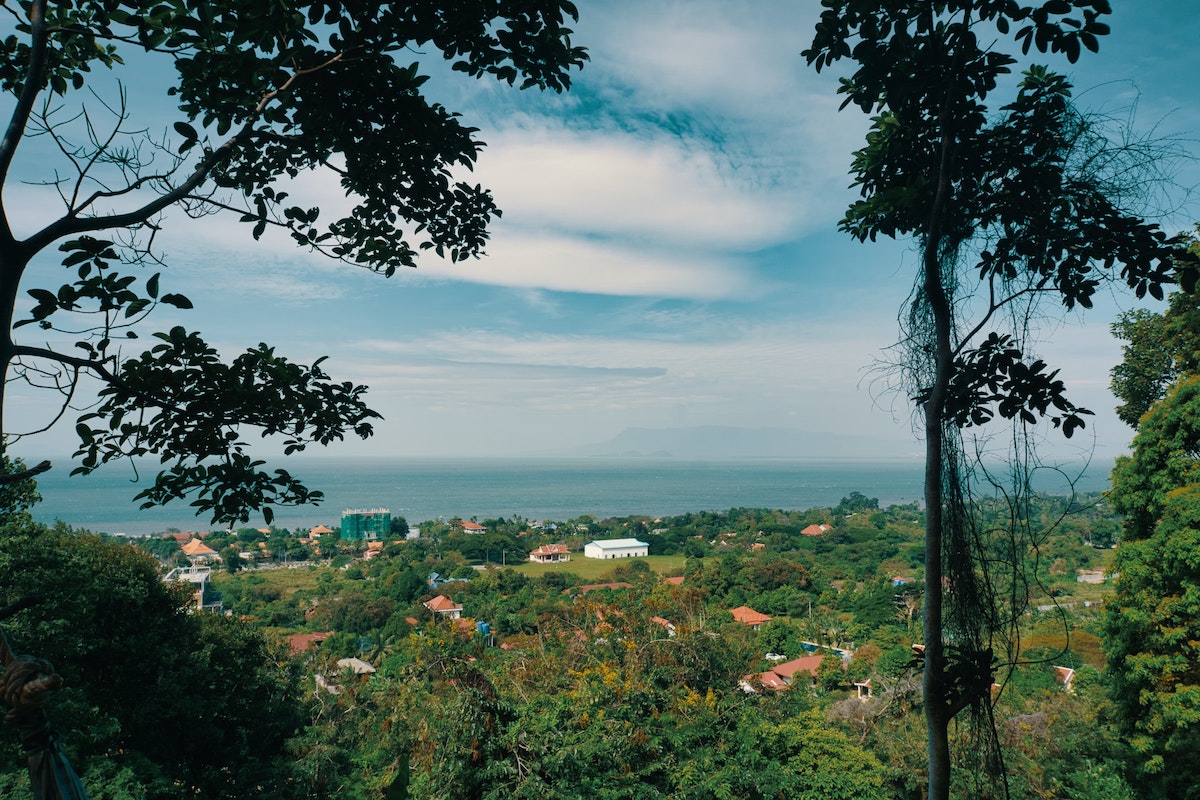
A digital nomadic life doesn’t always have to revolve around the over-urbanised cities and booming townships, and Cambodia’s riverside settlements of Kep and Kampot are proof of that.
This sleepy fishing destination by the coast is a perfect place to simply get away from it all. Only a half-hour drive east of Kampot, Kep is a tranquil mixture of sandy beaches, idyllic pepper farms and a beautiful national park. Although not the urban hub you might wish for when working as a digital nomad, Kep is the perfect sleepy place to recharge your batteries.
Pros of living in Kep
- Peaceful laid-back way of life.
- Access to Kaoh Tonsay Island.
- Not spoilt by tourism.
Cons of living in Kep
- Lack of modern infrastructure.
- Unreliable internet connectivity.
- Minimal expats and fellow digital nomads.
Pros and Cons Living in Kampot
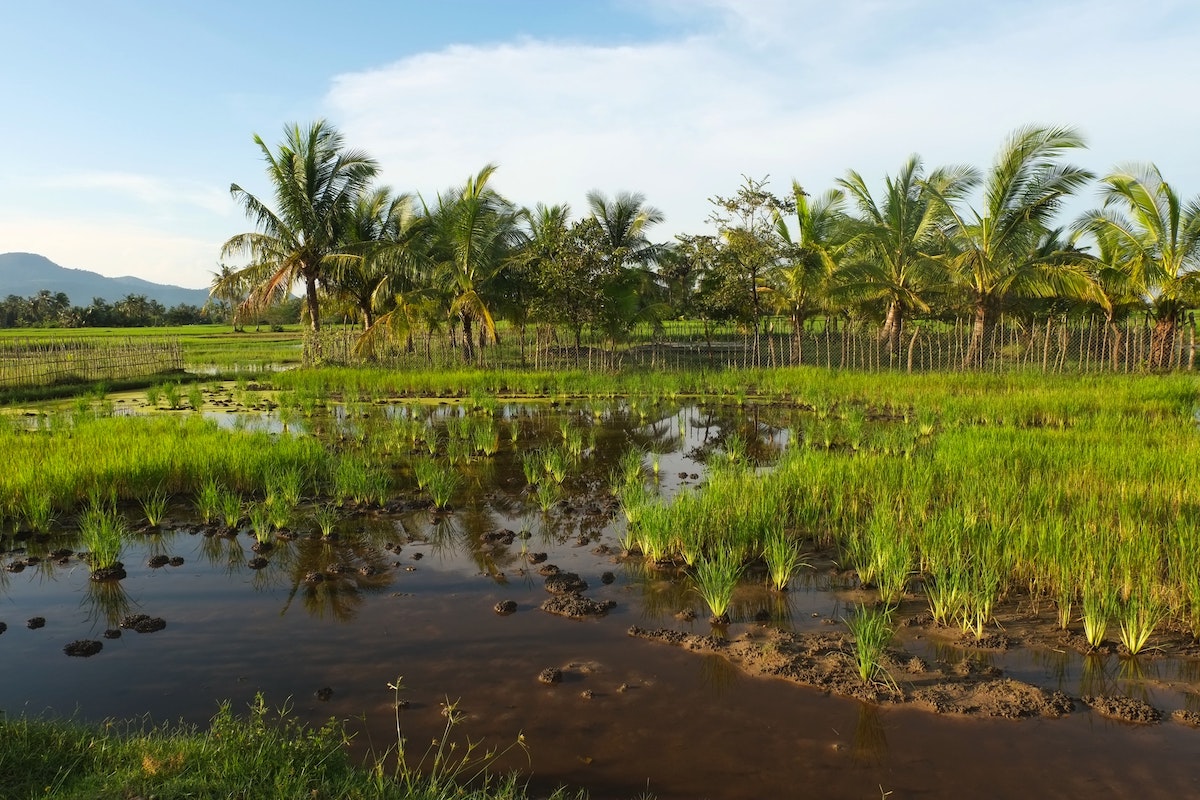
Taking the mantle as Cambodia’s premier coastal town from Sihanoukville, Kampot is slowly growing into the country’s up-and-coming digital nomad destination, and it is easy to see why. The laid-back vibe of Kampot matches the gentle flow of the Mekong that flows through the centre of town.
This laidback feel does nothing to take away from the life of the town; complete with cafes, riverside bars and a growing expat community, Kampot is the ideal place to settle if you want the Cambodian lifestyle without the overwhelming feeling of a modern city.
Pros of living in Kampot
- Relaxed atmosphere, close to the river and sea.
- A mix of bars and restaurants for all kinds of budgets.
- Great internet coverage.
- Close to islands, national parks and the sleepy town of Kep.
Cons of living in Kampot
- No huge retail or electronic stores.
- Not as walkable as many other towns.
- Noticeable seedy underbelly.
Cons Outweighed Pros (For Me) Living in Cambodia
I chose to stop living in Cambodia and felt instantly happy with my decision. I bear no ill will to the place and have nothing but fond memories of the country, I just found somewhere better (for me).
The infrastructure has improved a lot since I lived there, and they’ve been dealt a really rough hand in relatively recent years, so I always tried to give them a break when it comes to direct comparisons.
I now live in Chiang Mai, Thailand, it has almost everything that I want in a place and it also has a strong force of nostalgia on its side. Chiang Mai is the city where my online business really started taking off, Phnom Penh was the next chapter after that and it was a massively significant and poignant one.
I grew a lot in Cambodia and I got closer to working out what I was looking for (or what I was avoiding) when searching for a place to call “home.” Since then I have lived in Medellin and Santa Marta in Colombia and I also spent 3 years living in Mexico City.
Out of those three countries, there is only one that I wouldn’t rule out living there again (spoiler alert; it’s not Cambodia).
Neither of these cities (including Chiang Mai) is perfect. They all have their pros and cons and I simply decided that Phnom Penh or Cambodia as a whole wasn’t a place to consider my “forever home.” It was, however, my then home and I’ll always feel a deep sense of gratitude towards it and carry a lot of love in my heart for the Cambodian people and their big, bright, beautiful smiles.
Don’t take my word for it. These are my pros and cons of living in Cambodia. It wasn’t for me, but it may possibly be for you.




